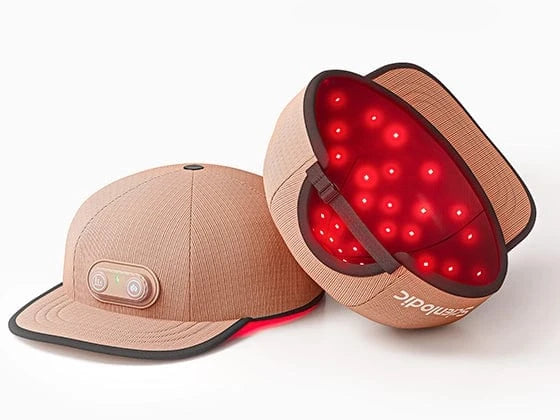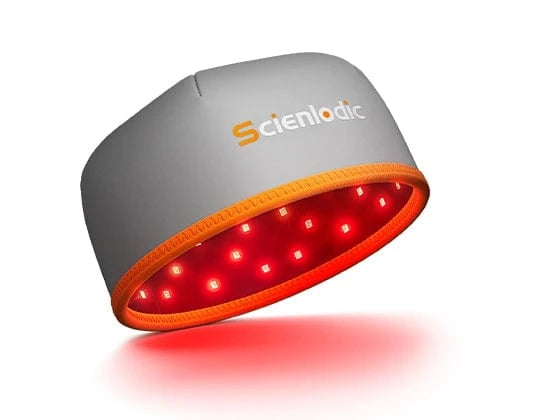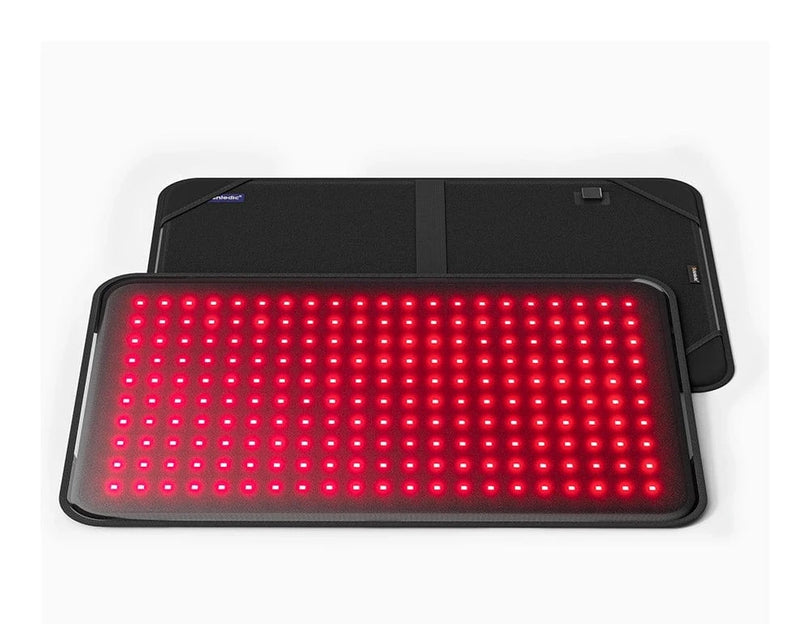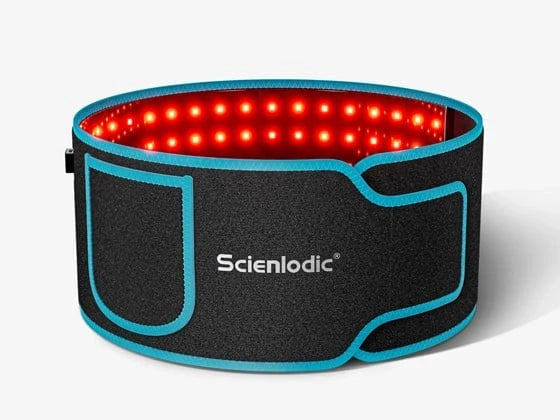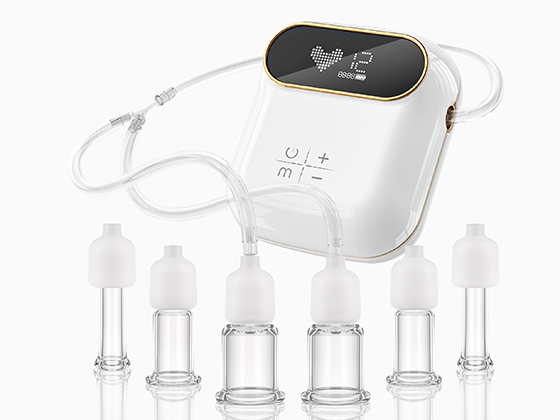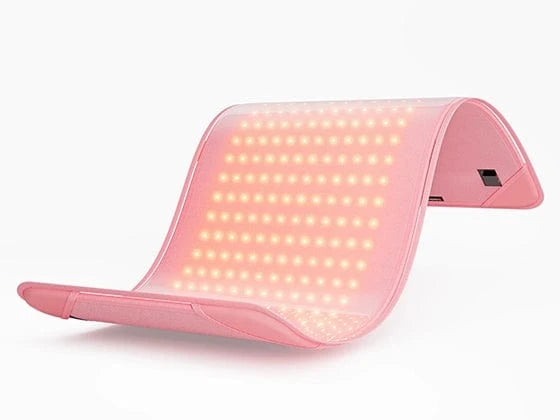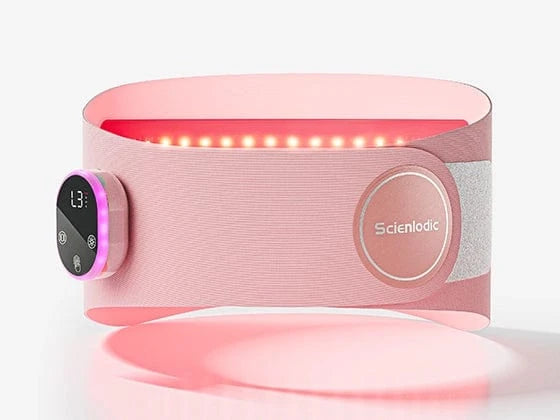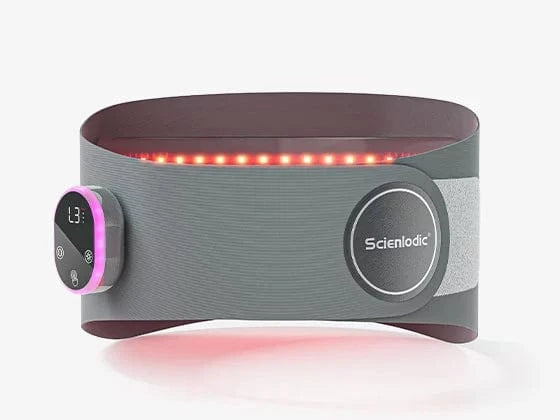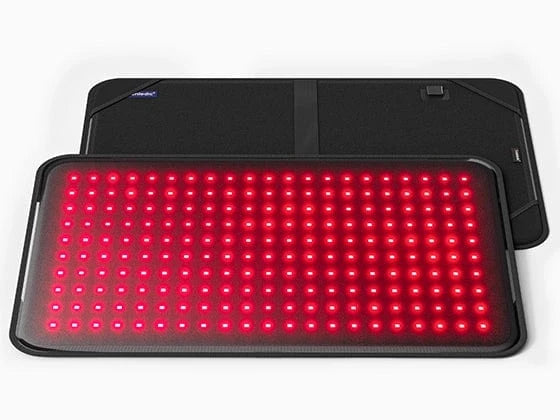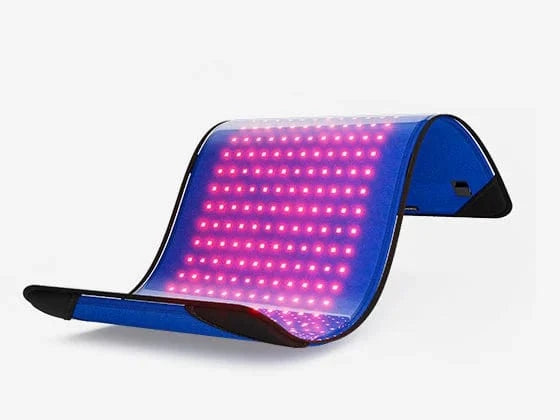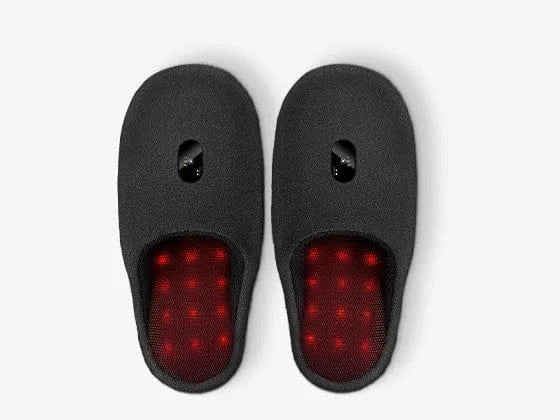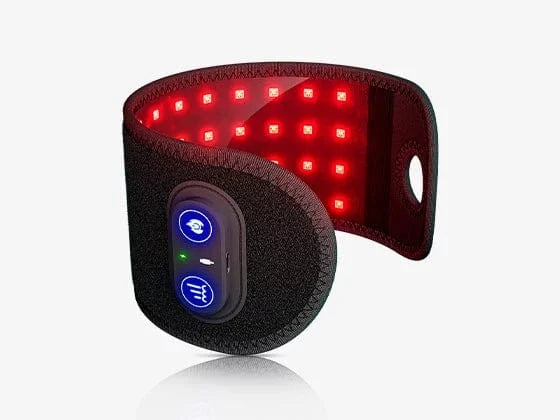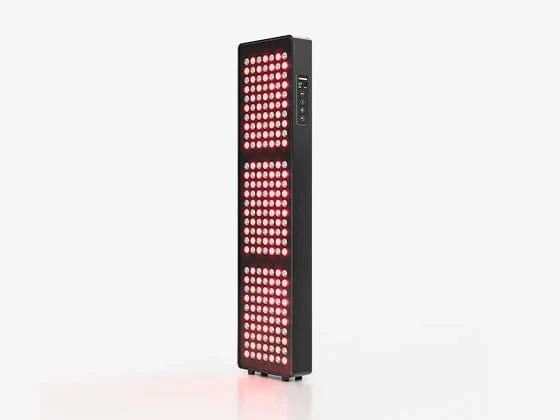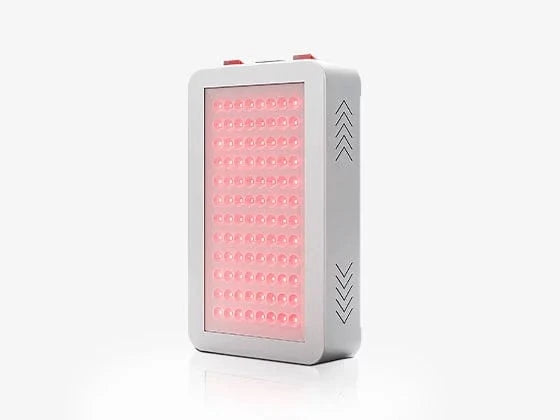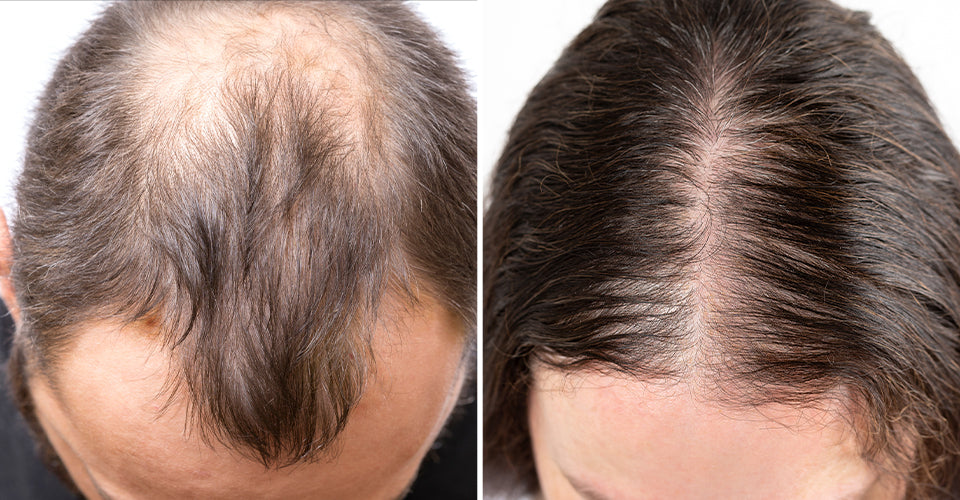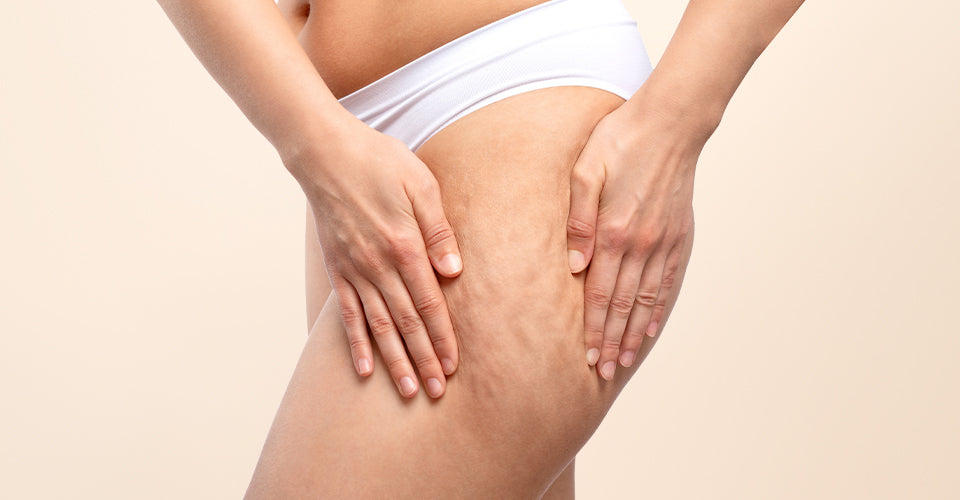Back pain, joint pain, and neuropathy pain can be extremely torturous, and when they become chronic, they can cause sleepless nights. You may have tried medication, massage, acupuncture, or even Electrical Muscle Stimulation (EMS) to get rid of the pain.
While they may provide relief, it is important to acknowledge that they may not necessarily provide a definitive cure. However, red light therapy benefits for pain have been reported in several studies, showing promising results in providing relief and potentially curing your problem.
Table of Contents
- Red Light Therapy and Pain Relief
- Research on red light therapy benefits for pain
- What is the best red light therapy for pain?
- Best red light therapy device for pain and home use
- Conclusion
This article explores the science behind red light therapy for pain and how it can help you achieve your pain relief goals. Additionally,It also offers guidance on maximizing the effectiveness of red light therapy when used at home.
Red Light Therapy and Pain Relief
Red light therapy, also known as low-level laser therapy (LLLT) or non-thermal LED therapy, is a type of phototherapy that uses red (630-700nm) and near-infrared (700-1200nm) wavelengths of light to stimulate cellular function. These wavelengths can penetrate deep into the skin and tissues, which is an advantage over other types of light.
The basic principle behind red light therapy for pain relief is that the light energy is absorbed by the cells in the affected area. This absorption stimulates the production of ATP (adenosine triphosphate), which is the energy currency of cells.
Does red light therapy work for pain?
Red light therapy was first used to treat lupus and the associated inflammation and pain. Dr. Niels Ryberg Finsen received the Nobel Prize in Physiology in 1903 for his exceptional contributions to this field.
From the results of 804 patients treated at the Finsen Centre, it was found that 695 (86%) responded well to treatment. Phototherapy was effective in treating nodular-looking tuberculous lesions and pain caused by lupus.
Therefore, based on scientific evidence and research findings, red light therapy has been scientifically proven to help alleviate pain, making it a credible and effective option.
Indeed, pain can manifest in diverse ways. Is red light therapy specifically tailored only for lupus treatment? According to the available research, it provides benefits that extend beyond being limited to lupus treatment alone. Keeping this in consideration, now we delve deeper into exploring the potential benefits of red light therapy for pain relief.
Research on red light therapy benefits for pain
Aside from the healing principle of increased ATP, which accelerates the natural healing process and reduces pain, how else can red light therapy work for pain? We have summarised some authoritative research.
How does red light therapy work for pain?

Dilation of blood vessels
Vasodilation increases blood circulation and oxygen delivery, promoting tissue repair and regeneration while reducing inflammatory responses and pain.
Studies have shown that red light therapy promotes the expression and activity of molecules such as endothelial-type nitric oxide synthase (eNOS) and extracellular signal-regulated kinase (ERK). These molecules stimulate the synthesis of nitric oxide, which is thought to be an important signaling molecule that leads to vasodilation.

Endorphin release
Endorphins are natural neurotransmitters the body produces to help relieve pain and stress. They can interact with the brain's opiate receptors to reduce pain perception and induce a sense of euphoria or well-being.
Endorphins can be released in response to various stimuli, including exercise, laughter, and massage, and they may also be stimulated during red light therapy. Red light therapy can help alleviate pain and improve mood by promoting endorphin release.

Reduced inflammation
Inflammation can cause pain because it involves the body's immune response to injury or infection, resulting in swelling, redness, and pain in the affected area. Additionally, inflammation can damage tissues and nerves, further exacerbating pain. Therefore, reducing inflammation is an important component of pain management.
The most recent study, published in 2023, focused on the effects of red light therapy for neuropathy in addressing inflammation. It discovered that Red Light Therapy for Neuropathy has the potential to decrease inflammation by inhibiting the production of pro-inflammatory cytokines while enhancing the production of anti-inflammatory cytokines. This promising outcome suggests that Red Light Therapy for Neuropathy may effectively alleviate pain linked to inflammation.
The beauty of red light therapy for pain is that relief and healing go hand in hand. So, what types of pain can red light therapy relieve? We conducted a more profound study to find out.
Back pain relief
Many office workers who spend extended periods at their desks suffer chronic, persistent back pain. This pain can be caused by various conditions resulting from poor office habits that can be difficult to self-identify and correct daily.

A randomized controlled trial has shown that Red light therapy for back pain is a promising non-invasive option.
The musculoskeletal back pain treatment group experienced a significant reduction in various types of pain, including pain while standing still, forward and backward bending pain, rightward and leftward rotating pain, and bending pain to the right, and leftward bending, with an average reduction of about 50%.
This reduction in musculoskeletal back pain was achieved through the use of LED devices that emit a wavelength range of 800-1200nm.
And a recent study in 2022 found that treating low back pain with discogenic lumbar radiculopathy using a low-intensity laser at a wavelength of 830nm resulted in significant improvements in pain intensity and functional impairment in the people who received the treatment.
Therefore, regardless of the condition causing back pain, whether it be degenerative disc disease or sciatica, muscle strain, or nerve compression, adherence to red light therapy can alleviate pain based on the three red light therapy benefits for pain mentioned above.
Joint Pain Relief
An unscientific lifestyle can put you at odds with your health. For example, wrong movements and intense exercise can lead to osteoarthritis and fibromyalgia; and it is also possible to be born with a genetic defect that can leave you with pain at some point, such as rheumatoid arthritis, which is a significant cause of joint pain.

We have observed significant improvements in pain and joint stiffness for knee osteoarthritis, ankle joint pain, shoulder and Neck Pain, and elbow osteoarthritis in humans and animals through treatment with red light therapy. The primary benefit of red light therapy for joint pain is the reduction of inflammation and muscle recovery.
Red light therapy has been found to repair cartilage damage caused by autoimmune responses and inhibit the expression of inflammatory cytokines and mediators in treating rheumatoid arthritis. However, these beneficial effects are short-lived. More studies on low-level laser therapy are needed to explore the exact mechanism of action, dose, and exposure regimen in different clinical situations.
Neuropathic pain improvement
As the pain persists, you may become hypersensitive to touch, depressed, anxious, and unable to sleep. This can lead to weakness and further complications.

Neuropathy, compressive neuropathy, and other conditions like diabetes and shingles can all cause neuralgia to be complicated. Red light therapy for neuropathic pain has potential in this area, improving pain management by promoting healing, reducing inflammation in the affected nerve, and restoring nerve control over muscle strength.
Temporomandibular joint(TMJ) pain relief
TMJ is a sliding hinge that connects the jaw to the skull. Wear and tear of the joint discs, or shifting out of their proper alignment due to impact, can lead to arthritis and damage to the articular

cartilage. This damage can result in a condition known as temporomandibular disorder (TMD), which causes pain in the jaw joint and the muscles that control jaw movement.
Red light therapy has shown positive results in treating TMJ pain. Furthermore, it provides a helpful guide for practitioners who treat patients with TMD, not only for pain relief but also for improving s masticatory efficiency and pressure pain thresholds.
Muscle pain relief
Red light therapy has been shown to reduce muscle soreness and stiffness, making it a potential treatment for people who experience muscle pain after exercise. It has been used by Navy SEALs, NASA astronauts, and the U.S. Olympic track team.
LEDs improved musculoskeletal training injuries for Navy SEALs by over 40% and reduced wound healing time for crew members on a US Navy submarine.
Many elite athletes have also begun to endorse certain brands of red light therapy due to its benefits for athletic performance and muscle recovery. Chris Paul and Devin Booker of the NBA Phoenix Suns use LED red light beds every day.

But this kind of elite-level equipment usually is correspondingly expensive. If we don’t need to match such a high-frequency, high-intensity competition, we can use other red light therapy devices instead.
Headache and Migraine Relief
Both headaches and migraines can have a variety of causes, including:
- Mental stress: Psychological stress, anxiety, and depression may contribute to headaches and migraines.
- Poor nutrition: Deficiencies in nutrients such as vitamin B and folic acid may contribute to headaches and migraines.
- Lack of sleep: Inadequate or poor-quality sleep may contribute to headaches and migraines.
- Neurological problems: Issues with the nervous system, such as neuropathy or neuritis, may contribute to headaches and migraines.
- Dietary issues: Excessive caffeine or alcohol consumption or consuming certain foods such as chocolate and cheese may also contribute to headaches and migraines.
Red light therapy was assessed for chronic migraines in a study conducted in 2019 involving three patients. Here are the results:
Patient 1: A 42-year-old man with a 10-year history of migraines twice a week. He experienced a migraine-free period of 2 weeks after the treatment.
Patient 2: A 53-year-old woman who had been suffering from migraines 2-3 times a week for 30 years. After a 10-session regimen spanning over 7 weeks, she had no migraines during the treatment and for 90 days afterward.
Patient 3: A 72-year-old woman with a 59-year history of migraines occurring 3-5 times a week. She underwent an 8-week treatment regimen, receiving twice-a-week treatments for the first 4 weeks, followed by once-a-week treatments for the next 4 weeks. During the entire duration of the treatment, she did not experience any migraines.
What is the best red light therapy for pain?
In the mentioned studies, various red light therapies were utilized. In this session, we will offer information on red light therapy options for pain that are both effective and safe.
The effective wavelength of red light for pain relief
The wavelengths of red light used in pain treatment studies range from 600 to 1000 nm. This broad range is because many factors cause pain, and we have classified which problems the different wavelengths of light are effective in treating.
- Shorter wavelengths (630–750 nm) may be more effective in relieving pain and improving circulation. This is because NO affects vasodilation.
- Longer wavelengths of red light (800-900 nm) may be more effective in reducing inflammation and promoting tissue repair.
Both stimulate the production of ATPs, increasing cellular energy and metabolism. Therefore, we recommend using a combination of wavelengths for treatment(e.g., 660nm red light and 850nm near-infrared light therapy for pain).

Safe LED light therapy for pain
Theoretically, both LED and laser red light therapy for pain are safe, non-invasive options that do not contain harmful chemicals or carry the risk of dependency. They work by healing the body from the inside out.
However, it is important to note that laser therapy should always be used under professional supervision. This is because high doses can cause burns, induce the production of carcinogens, or even lead to blindness if the eyes are directly exposed in uncontrolled situations.

Optimizing Comprehensive Pain Management with the Best Red Light Therapy
Incorporating red light therapy into comprehensive pain management presents potential advantages for individuals aiming to enhance their physical and mental well-being.
Essential pain management strategies encompass:
- Medication: Many individuals have concerns about the use of pain medications due to potential issues like addiction, adverse side effects, and increasing tolerance.
- Physical therapies: Such as exercises, massage, and heat/cold therapy, to improve physical function and alleviate pain.
- Psychological therapies: To address the emotional aspect of pain through techniques like cognitive-behavioral therapy (CBT) that help clean thoughts and manage stress.
- Lifestyle adjustments: Adopting a healthier lifestyle, proper sleep, regular physical activity, and stress reduction techniques to manage pain effectively.
Exploring Pain Relief in Superficial and Deep Tissue Applications with Red Light Therapy
Red Light Therapy for Superficial Tissue Pain
In the context of pain relief, red light therapy demonstrates notable applications in treating more superficial tissues. Injuries to surface tissues mainly include the following conditions:
- Skin Conditions and Wound Healing: Red light therapy has shown promising results in managing various skin conditions, such as acne, psoriasis, and eczema. By penetrating the skin's surface, red light can reduce inflammation and promote collagen production, leading to improved skin texture and accelerated wound healing.
- Dental Pain Management: For dental applications, red light therapy has been explored as an adjunctive treatment to alleviate pain and promote healing after dental procedures, such as tooth extractions or oral surgeries. The therapy's ability to penetrate oral tissues may aid in reducing postoperative discomfort and inflammation, contributing to a more comfortable recovery process.
- Superficial Blood Vessel Disorders: Red light therapy has also demonstrated potential benefits in managing superficial blood vessel disorders like spider veins and small varicose veins. By promoting improved blood circulation and reducing inflammation in the affected areas, red light therapy may contribute to a reduction in pain and discomfort associated with these conditions.
Red Light Therapy for Deeper Tissue Pain
In the realm of pain relief, red light therapy also exhibits significant applications in addressing deeper tissues, which encompass the following scenarios:
- Muscle Pain Management: Red light therapy has been studied for its potential to alleviate muscle pain and soreness resulting from various factors, such as overuse, injuries, or chronic conditions. By enhancing blood flow to the affected muscles and reducing inflammation, red light therapy may promote faster recovery and provide relief from muscle discomfort.
- Joint Pain Relief: For individuals experiencing joint pain due to conditions like osteoarthritis or rheumatoid arthritis, red light therapy has been investigated as a complementary treatment option. The therapy's ability to modulate inflammatory responses and promote tissue repair may offer relief from joint pain and improve joint function.
- Organ and Tissue Healing: In deeper tissues, such as internal organs, red light therapy may contribute to healing and pain management after surgeries or injuries. By stimulating cellular repair and reducing inflammation, red light therapy can aid in postoperative recovery and improve overall organ function.
- Bone Health and Fracture Healing: Emerging research suggests that red light therapy might play a role in promoting bone health and aiding in the healing of fractures. The therapy's potential to support bone cell growth and reduce inflammation may accelerate the recovery process and enhance bone strength.
How to use red light therapy for pain at home
Consistency is key when it comes to at-home red light therapy.
Without professional supervision, you can't expect the same level of power as in a clinic, which makes the treatment potentially risky. Therefore, using home red light therapy equipment in small but frequent sessions is a safer alternative.
- Determine your own photosensitivity level: Red light does not include UV rays. However, it is recommended to check with your doctor before starting treatment if you are taking any medications that can make your skin photosensitive.
- Eye protection is necessary: The strong red light can give the illusion of looking directly at the sun. Therefore, wearing protective goggles is a must.
- Direct irradiation: Visible near-infrared light cannot penetrate clothing, so please expose the treatment area directly to red light.
- Adhere to the treatment procedure: Use it for 5-30 minutes every day and consult a professional medical person to select the light intensity and treatment time that suit you best.
Conclusion
Backed by relevant research studies, this article presents the benefits of red light therapy for pain relief. By utilizing red and near-infrared wavelengths of light to stimulate cellular function, red light therapy offers potential relief from pain.
Red light therapy functioned by dilating blood vessels, releasing endorphins, and reducing inflammation. It has demonstrated effectiveness in treating a wide range of pain types, such as back pain, joint pain, neuropathic pain, headaches, and providing relief for migraines.

